|
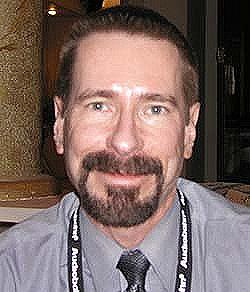 Following
is an interview between Secrets Senior Editor, Sumit Chawla, and Kevin
Voecks, Director of Technology at Harman Specialty Group. Following
is an interview between Secrets Senior Editor, Sumit Chawla, and Kevin
Voecks, Director of Technology at Harman Specialty Group.
Sumit: Could you please talk about how Revel started?
Kevin: It started because Harman had been purchasing companies that were the
best in their area for quite a few years, and it's a way that Harman became
best in category in so many areas. There are numerous pro-audio companies,
for example, and you just can't find a studio without Harman brands (both
our Pro Audio) and very well known consumer brands. At the same time Mark
Levinson, one of the Harman companies, is known all over the world as the
best in audio electronics. It's quite remarkable how uniform that is, and
the company could point to Mark Levinson and say we have the best
electronics, and they are known as such. At the same time, while there are
(Harman) brands that are extraordinarily successful in loudspeakers, both in
consumer and pro, in most audiophile markets they were not known as “the
best”. So the question is: how do you go out and acquire a company like Mark
Levinson that combined in a unique way, real engineering, and the soul of
high-end? You know, understand it; getting it about high-end! There just
wasn't a speaker company that really had both elements - not honest to
goodness engineering, rigorous real engineering, and really having the
attitude of real music lovers - of sensitivity to the finesse that is
required for really great sound quality. Fortunately such a company didn't
exist, and so Dr. Harman had to create one within the organization. Revel is
only the second company that Harman has ever created from scratch. Harman Kardon is the only other one. All the others were acquired.
Sumit: When and why did you join Revel?
Kevin: That situation was an opportunity to start up a new company, but
rather than doing it in a traditional way, you know, on a shoestring, we
were able to start up with the best engineering resources at our disposal in
the world, both in terms of facilities, know how and engineering experts
throughout the field, experts that often have specialized knowledge,
certainly transducer design and even specialized within transducer design
and materials. I mean, you name it! (For example), On the mechanical side
there are experts in the organization, and they are all available to Revel,
at our disposal. So it was a unique opportunity to create a high-end speaker
company with the goal of simply creating the best sounding loudspeakers. In
fact, that's the only thing Dr. Harman said at the inception of the company
- “Make the world's best loudspeakers.” No restrictions on the kind of
technology. For example, if we had decided that electrostatics were best,
even though that's a completely different kind of technology than you've
seen in the Harman loudspeaker brands. There were absolutely no
restrictions. We determined with double blind listening tests and
engineering research that dynamic loudspeakers although refined, in numerous
ways, make for the most accurate loudspeakers.
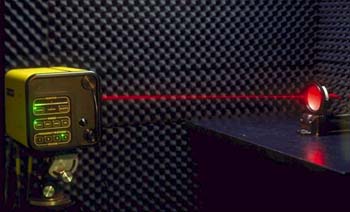 Sumit: Were you designing loudspeakers from the start of your career? Sumit: Were you designing loudspeakers from the start of your career?
Kevin: Yes. That started with a little company I had called Symdex. I had a
high-end HiFi store while I was in college called “Natural Sound,” who are
still one of our dealers in Massachusetts, and I was going to school with a
specialty of designing loudspeakers. I started a little speaker company
because it was very obvious, having the store, where the problems were in
the systems. Loudspeakers were the big issue, and so I did some research and
came up with a speaker. (Later) we started up Mirage loudspeakers in Canada,
and then Peter Snell had an untimely death. He had been a good friend since
my retail days when we sold his loudspeakers, and his work was far ahead of
his time. Many of the beliefs that he had clear back to the 70s were against
the main beliefs in the audiophile world, but most of them turned out to be
right. And now that we have a lot of years of research behind us, that's
proven to be the case. Things like high-order crossovers, and things like
being concerned about phase in crossover regions in transitions, but not
overall absolute phase kind of issues, the importance of both on-axis
response and off-axis response, and power response were pretty unheard of.
Still are really! They are all things that we've refined for years and been
able to make much better loudspeakers because of that. I became the chief
engineer for Snell for a number of years before Revel.
Sumit: How has your experience at Revel been compared to the previous
companies you were at?
Kevin: I've been used to working on a shoestring, certainly relative to at
Revel. Revel is almost an embarrassment of resources. When I talk to other
engineers in the speaker field, it almost feels like, gee it's not fair to
have such phenomenal resources at our disposal! Literally, no one else does.
It's very exciting!
Sumit: Could you elaborate on the research facilities that are accessible to
Revel?
Kevin: Absolutely. Before I was at Revel I was using the Canadian National
Research Council because it had the best measurement facilities and Dr.
Floyd Toole's work there was absolutely best in the field. He went to Harman
and continued that great research along with Sean Olive who is now in charge
of subjective testing or double blind listening tests at Harman. That's just
a priceless resource because the bottom line is how something sounds.
Normally listening tests are done in a way where it's anecdotal and when you
do double blind listening tests, you eliminate the variables, and it's
certainly about how the speaker sounds.
Because of having our pneumatic
speaker mover, each of the speakers that we are listening to is precisely in
the same physical location, so that endless problem that speaker designers
have always had about how you compare two loudspeakers technically is
completely eliminated. They are in exactly the same place, and they are
switched so quickly that our physical aural memory is still intact, which is
to the shortest of all our senses in that our aural memory only lasts a few
seconds. It means that we are able to do more refined comparisons. You can
discern smaller differences reliably when you do the really fast switch.
Some people are concerned that rapid switching isn't their style--they like
to listen for extended periods. The way we do listening, you can do it
anyway you want. If you want to listen for half an hour before you switch,
that's fine. There's no pressure to do it otherwise in the Revel listening
test.
The ability to do accurate measurements is really critical. There's no
replacement for a large real anechoic chamber. Basically the industry is
using pseudo-anechoic measurements that are achieved electronically, and
they don't work in that they throw away so much resolution depending on how
large the area is in which you are measuring that you miss critical data.
Not only do you get inaccurate low frequency measurements, but you also have
problems with not being able to see resonances, or evidence of resonances.
Some of the research we've done includes the first really good research into
the audibility of resonances. We need to know under what circumstances are
they audible, and then we can do our design work so that we can make sure
that they are below the audible threshold. This is one of countless areas
where we've had to determine what's the threshold of audibility, and that's
never a simple number. It's usually frequency and amplitude dependent, so we
need to know all the circumstances. For instance, the audibility of
resonances is dependent upon the kind of music. Resonances can actually be
louder than the average music level for things like female pop vocals before
we first hear them. Whereas for classical music recordings they can be at a
much, much lower level, well below the average level of the music and you
still hear them. The most sensitive listening test for resonances is pink
noise, and so that's our standard. We want to make sure that the resonances
in Revel loudspeakers are inaudible even with the most demanding possible
test: pink noise.
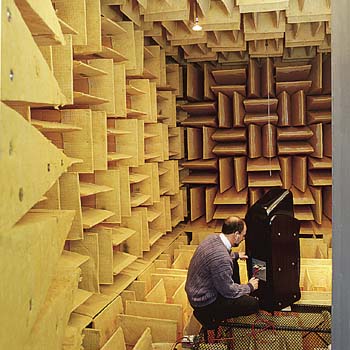 Sumit: How well do the measurements correlate with the actual blind tests? Sumit: How well do the measurements correlate with the actual blind tests?
Kevin: That's a perfect question. Because we actually have come up with
measurements based on listening tests, it's a full circle. We don't do
measurements because we have cool equipment to do it, we do them only
because we found an audible characteristic that will differentiate two
speakers or one that's more refined.
So how do we measure that? How do we
quantify that so that we can really engineer the speakers to perform better
in that regard. So there's extremely good correlation between the
measurements that we do, the set of measurements, and the sound quality.
Looking at a set of measurements, if they're not good, we can say absolutely
for sure that the speaker will not excel in listening tests. The converse is
not completely true. Looking at a good set of measurements we could say this
is a good speaker, but the difference between a really good and really great
speaker is still beyond our ability to absolutely predictably measure. So
it's that last level that we spend a lot of time on because it's not as
direct a path.
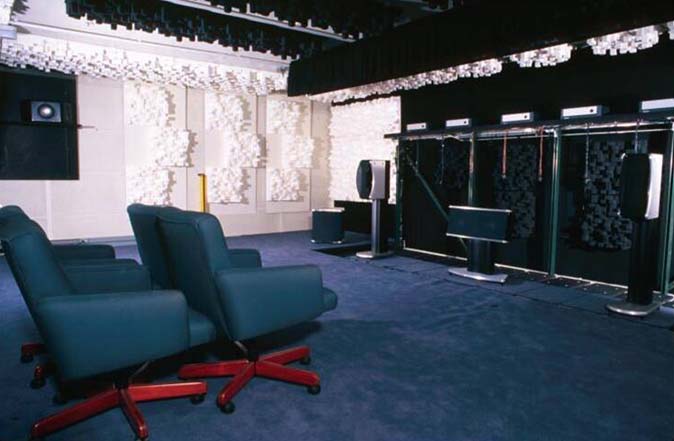 Sumit: What is the selection process for the individuals who are to
participate in the listening test? Do they undergo any training?
Kevin: Sean Olive has created a listener training program that makes
listener's responses far more valuable to engineers. For example, instead of
someone saying that it sounds “fuzzy in the bass,” they learn how to
recognize frequency ranges so that they might instead say, “It sounds like
there is a resonance around 150 Hz.” That is much more useful feedback.
Years of tests have resulted in a massive store of data that Sean can “mine”
for a variety of important information. For example, we know that everyone
with reasonably “normal” physical hearing ability prefer the same speakers.
It's not about “personal preference” after all. In addition, we know that
everyone likes the same speakers for a variety of kinds of music. There is
no need for “rock” or “classical” speakers. Knowing this, listeners are
chosen for their ability to quickly and consistently come to conclusions.
Their consistency is an important measure of the validity of their listening
tests.
Sumit: Do the different loudspeaker teams within Harman, like JBL and
Infinity, do any form of collaboration?
Kevin: There is at least informal collaboration. If there are discoveries
made by a design team, then that basic improvement is shared. There is also
Dr. Toole's whole research group which is all corporate, its all shared
information and any company can choose how much of it to utilize. Then there
is the Rapid Integration Lab, another research group that is doing some
cutting edge research with practical applications that we are developing now
and will be more so in the future.
Sumit: Can other groups utilize the newly developed transducers that are
used in the new Performa series?
Kevin: The transducer technology is available to any one of our companies.
It's a question of on each model whether there is the budget to utilize all
of the refinements, sophistication that we are using in the new Performa
models, for example. The transducer engineers like to show-off what they can
do, and Revel is the place where they can best express their capabilities.
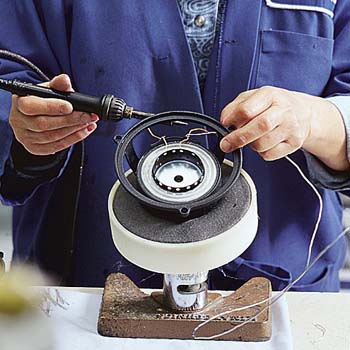 Sumit: Revel is part of the Harman Specialty Group which includes the Mark
Levinson and Lexicon brands. Is there any collaboration with those groups? Sumit: Revel is part of the Harman Specialty Group which includes the Mark
Levinson and Lexicon brands. Is there any collaboration with those groups?
Kevin: Well, I work equally for Mark Levinson, Lexicon and Revel. And there
is absolutely synergy there in terms of things like low frequency research,
how best to do bass management, how to do room equalization, which will be
an option in Lexicon processors, for example. And it's very important that
the loudspeakers' capabilities and how they integrate to the room is taken
as a whole with room equalization processors that are to be used by our
electronics clients. So there is a lot of connection there. The research
group in Northridge definitely works together with Lexicon and Levinson
engineering groups in Bedford.
Sumit: Revel started out by introducing the Ultima series and has since been
introducing and improving the Performa line. Could you please comment on the
two lines?
Kevin: Well, Ultima was meant to be much like its name implies: Ultimate
kind of loudspeakers where we took all of the technology and applied it as
best we could to get the best result. Performa the concept was simple: how
can we reduce the cost while having the smallest possible impact on sound
quality? How can we make the absolute best loudspeaker for the money? And I
think that because of our engineering knowledge, because we know what things
are important and what things are less important, because we understand that
thoroughly, we don't have to put as much money in places with lower returns.
Instead we can direct everything, focus it where it makes the most
difference. Obviously the first place where you save money is in the
enclosure which is an important part of the cost of a loudspeaker, and so by
spending less money on visual aspects we can best optimize the value. So we
think that the Performa models are just a phenomenal value. We've done blind
tests with speakers that are very well known at five times their price and
we easily beat them. So they're really a great deal.
Sumit: The Ultima series have not been updated in some time. Given that,
have they stood the test in time?
Kevin: They have. They still outperform the Performa models, and maybe more
importantly, we continue to have speakers come in from other companies that
are talked about, and we have yet to have anything challenge the Salons for
example. So they retain their place in the sonic category of blind listening
tests.
Sumit: The Salon is the most expensive loudspeaker in the Ultima series.
Correct?
Kevin: That's correct.
Sumit: What do they cost?
Kevin: Salons are $20,000/pair approximately.
Sumit: If someone had said that you could design a loudspeaker that cost
twice as much, could you have designed a better loudspeaker at that time?
Kevin: No. We actually have been getting demands for more expensive
loudspeakers for years and we have absolutely resisted just putting in a lot
more drivers and making bigger speakers and collecting money. We'll only
make more expensive loudspeakers when there's a reason: they have to be more
expensive in order to sound better.
Sumit: I find that quite commendable. When designing a loudspeaker what are
the three most important aspects of a loudspeaker according to you that one
must get right?
Kevin: Timbre is the overwhelming aspect. Based on our blind listening tests
timbre is the thing that differentiates between good and bad loudspeakers,
but also between good and great loudspeakers. So timbre is kind of a broad
term. It incorporates balance, frequency balance, or it can be thought of
very roughly as frequency response. That's a little dangerous because, not
to infer that one on-axis measurement tells you what the frequency response
is in a loudspeaker. It doesn't. Other areas like off-axis response are very
critical and we've learned that very far off-axis response like 60-75
degrees is very critical. Almost no one even measures it, let alone designs
loudspeakers that are optimized at that sort of angle. But we've looked at
real world situations and found that the all-important side-wall first
reflection is a function of the speaker's output at that kind of angle in
the vast majority of listening rooms. So it means that you're going to be
hearing that kind of sound. You will hear it with a slight delay, and in
many rooms without very much attenuation. So optimizing the response at that
kind of extreme angle is very, very important. And then the power response,
the reverberant field that we hear a little later in time is also important.
So we literally design for all of those areas: the direct sound, the first
reflection sound, and the reverberant field, because we know that all those
three things are huge contributors to the timbre, to our perception of the
speaker's timbre.
Sumit: How does the price point limit you in so far as achieving these three
goals?
Kevin: The three goals of direct sound, first reflection and power response
I see as one basic goal. And price ranges such as that of the Performa F32
don't really limit that very significantly until you get perhaps to 12-15
kHz where the Ultima speakers have a rear tweeter that comes in just to
optimize the reverberant field, not for the direct sound or the
first-reflection. That refinement is an example of something that isn't the
maximum bang for the buck (so isn't included) in the Performa range.
Sumit: You mentioned high-order crossovers a while back. Revel speakers have
always used high-order crossovers. Several companies take the opposite
approach i.e. they use low-order (first and second order) crossovers. What
are the disadvantages of using low-order crossover designs? Are there any
advantages to using low-order crossovers?
Kevin: Well, we were fortunate enough to have done research that has allowed
us to know, to really understand, what are the characteristics that are
important to sound quality and what are the characteristics that have some
value but less, and those characteristics that don't have any sonic value
and that allow us to make the optimum choices in the design. That all points
very, very strongly to high-order crossovers because high-order crossovers
are necessary in order to have low distortion which is way up there on the
list of important sonic qualities.
High-order crossovers are important to
have good dynamic capability without compression. It would really shock
audiophiles to see how much the response of most high-end loudspeakers
changes at different volume levels. They are like completely different
loudspeakers when played even at moderate levels, and it is something that
is very directly measurable. So we really focus on making sure that not only
is the timbre really accurate, but that it changes as little as possible
over a very wide dynamic range. Plus the distortion is below the audible
threshold; resonances are below the audible threshold because our research
has shown those are really important things.
If we used first-order
crossovers, we would degrade the off-axis response, and therefore the
timbre, we would completely degrade the distortion characteristics, we would
loose our dynamic capability, our freedom from compression because tweeters
and mid-ranges are then getting signals that are outside the frequency range
that they are really designed to handle. So it's really mostly heat, and
that heat makes the voice coil impedance go up, and as a result of that the
filter network is mis-terminated because it's not seeing the termination
impedance it expects to see, and then the response of the crossover is
impacted.
So what that means is that when speakers heat up, voice coils heat
up, the crossover networks don't work right anymore and you get peaks and
dips in the response, several dB peaks and dips in the response. So with
high-order crossovers and with all the things that we are doing in the
transducer design to keep the voice coils cool which means we are generally
using a very large voice coils which spreads out the heat over a large area,
and we're using in some cases multiple woofers to further spread out the
heat. We are using all of these techniques including the way we vent them
which forces the air through the gap at the same time, the vents are
designed in such a way so that they don't create noises. It's a very
sophisticated approach to solving the problem with heat. But a big part of
that is the high-order crossovers. It's an essential part of it.
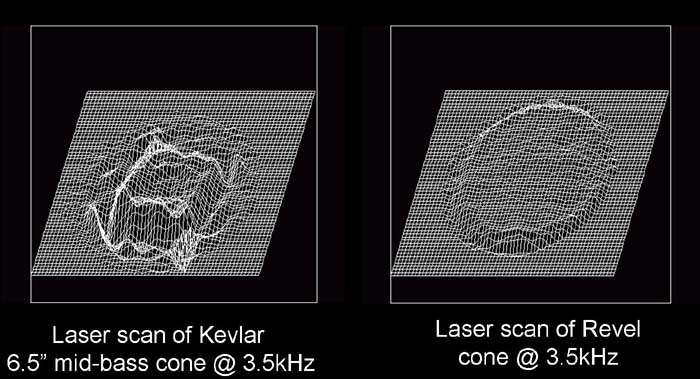
Sumit: What crossover slopes are typically employed in Revel designs?
Kevin: Our networks are always tweaked to result in the smoothest possible
transition between transducers. Because of that, their electrical
characteristics don't meet the textbook definition of classical filters,
which is why we don't specify them in our literature. However, the resulting
response of the transducer/enclosure acoustic and the filter's electrical
response is close to a 4th-order (24dB/octave) Linkwitz-Riley
characteristic.
Sumit: Have you ever heard a good loudspeaker that uses a low-order
crossover?
Kevin: I have heard good loudspeakers that use low-order crossovers. I
haven't heard great loudspeakers that use low-order crossovers. They run
into these problems. It's inevitable.
Sumit: Do you feel that time-coherence is an important property of a
loudspeaker?
Kevin: No. We've done a lot of research in the area. In fact when I made my
first loudspeakers at Symdex in 1976, I thought that it was important
because that was the fad at the time. With some people, it's still a fad.
But if you look at the way the human hearing functions, you'll see that
time-coherence isn't important. I actually credit Dr. Stanley Lipshitz at
the University of Waterloo with bringing this to my attention, to put it mildly,
in the 70's at Mirage. He and Dr. Vanderkooy came up with a box that would
let you alter phase response without altering amplitude response, and by
using it you could do listening tests to determine the audibility of phase
errors, or time-coherence. It was quite evident then that if you are in an
anechoic chamber or you are using earphones, you can detect the difference
especially with special clicks that are made to hear it. You can't always
say which is right or better, and as soon as you introduce the room it's
100% inaudible. The importance of phase is in the crossover region because
that's an indicator of the blending of the transducers that are being
crossed over. So in and of itself it's not a significant thing. And in order
to try to optimize it you really sell your soul in terms of things we know
are really, really important to sound quality. That is a key fact. It's not
like it's cost free, audibly, to optimize that parameter.
Sumit: Have you ever thought of designing an active loudspeaker?
Kevin: Yes, we've looked at that and we have found that compared to active
implementations of our existing loudspeakers, we're really able to achieve
the kind of equalization that you would want to do in the mid-range and
top-end with the passive filter networks. The response of Revels is so flat
that you'd be hard pressed to see an improvement if you were to be actively
equalizing just the loudspeakers response themselves. At low frequencies,
obviously with subwoofers, that's an advantage in terms of size. And then
we've taken advantage of the real opportunity there by providing
equalization for the particular room situation beyond what the loudspeaker
does.
Sumit: Would your ideal center channel speaker be the same as the left and
right speaker?
Kevin: It's no question the ideal center channel would be the same as the
left and right for the best possible timbre match. That's been a problem
with home-theater because so far there are no perforated screens that don't
ruin the picture even more than the sound. They degrade both, and that is
unacceptable. Until and if someone comes up with a screen that is
acoustically transparent and doesn't significantly degrade the visual image,
we need to use center channels that will fit below a front projector or
above or below a rear projector. So we match the timbre as well as possible,
and we have adjustments that do a good job of compensating for these various
positions. We actually do all of the anechoic measurements and the double
blind listening test with the speakers on stands as one condition, sitting
on a rear projector TV as another condition, and built in all of those tests
to really optimize the response under all of those conditions. I can't
imagine anyone else goes to that length.
Sumit: And you have a switch ….
Kevin: A switch, to switch the circuits in for the different locations.
Sumit: What is your opinion of the THX loudspeaker certification program?
Kevin: The THX program in general has been very, very important for the
industry. I think if it hadn't existed, there'd be chaos right now,
particularly in AV processors. Things like bass management would be a real
mess. In loudspeakers, I certainly applaud their approach to looking for
dynamic capability, looking for flatness of response, but in making speakers
that go beyond very good to excellent we have to look for real flatness of
response in a large number of off-axis measurements, not just direct sound,
and as I said, optimizing the power response. In order to do that we don't
want to limit vertical directivity in a manner that would degrade the
off-axis response, which is how THX directivity is normally achieved. So we
avoid doing that.
Sumit: What components and speakers do you use in your home-theater?
Kevin: Well, it's a great luxury, because we do some of our development work
in my home-theater, one of the half-dozen rooms that we use as our primary
listening rooms, and we do some of our training there, I have all of the
Revel models in the system, so it changes constantly.
Sumit: What are some of the problems that you find in listening rooms?
Kevin: Listening rooms are our biggest problem, clearly, and it's the
combination of the way that the loudspeakers interact with the room and the
room characteristics overall. Low frequencies are the hardest thing to deal
with. They're kind of the most mechanically related thing. So the placement
of the loudspeakers and the location of the listeners are extremely critical
in a listening room with any loudspeaker, and room treatment at least at
mid-range and high-frequencies is really critical. While our speakers have
very accurate (response) even way far off-axis, it's still greatly
preferable to properly treat the first reflection points in the room.
We
know from our research that the first reflection points are audibly very
critical, and especially the side wall reflection points. So I like to see
absorption, at those first reflection points, at least unless the room is
quite large, and otherwise diffusion in the room overall. For imaging
characteristics it's optimum to be sitting on the center line, but that
introduces challenges at low frequencies in most rooms which can be
accommodated by diaphragmatic absorbers to the side or the use of multiple
subwoofers, and our work is on-going. We've got some great results using
multiple subwoofers in order to solve problems of dips in response that you
can't solve with any single subwoofer location, and also getting consistency
of response throughout the listening area.
Sumit: This leads into my next question on the use of multiple subwoofers.
Do you recommend that?
Kevin: Absolutely. We've done really quite definitive research on that, and
we found the optimum number of subwoofers is four, and you get a huge
improvement in most rooms going from one to two subwoofers.
Sumit: I'm assuming that the work you are referring to is the white paper on
the Harman website by Todd Welti.
Kevin: Yes. And there is a much more complete version of that that was an
AES paper. We were fortunate enough to be involved in that research, and I
can say that it's not just theoretical. That's the way it works in the real
world.
Sumit: The suggested configurations in that white paper are not in the Revel
owners manuals. Any particular reason for that?
Kevin: The complication of explaining to people how to choose the positions.
But when we introduce this new measurement software (for the Ultima Sub 30
and Perform B15), which is free, it will allow people to do very
high-resolution in-room measurements. That's really a breakthrough. By doing
those high-resolution measurements they can determine experimentally, for
sure, where the right places are. We're working on a wizard driven process
to simplify the process for users. It's really challenging because most
rooms have physical limitations for one reason or another: we can only put
the subwoofers along these walls or in these possible locations. It's very
hard to solve all the endless assortment of specific installation issues.
Sumit: Will any special measurement equipment be required for this or would
a radio shack meter work?
Kevin: The system will compensate for the response errors of an average
Radio Shack Sound Level Meter, but a calibrated microphone is strongly
recommended. They can be purchased for less than $100, and the improvement
that can be achieved by being able to make accurate measurements is
tremendous.
Sumit: What are your thoughts on DVD-Audio and SACD?
Kevin: I wish they were being marketed better; especially DVD-Audio; it's
been marketed horrendously. I doubt that there is any sonic difference
between the two systems, but unfortunately the examples that are out there
for DVD-Audio are lacking overall, and there are some really nice examples
of SACD recordings. There's no question that a two-channel recording cannot
capture sound realistically because it's missing that important component of
a sense of space. For years everyone has tried to simulate it in various
manners, and some of them are really quite effective, like Logic 7. But we
can record it, and we can reproduce it, so I am hoping that one of them
succeeds.
Sumit: Do you ever listen to your CD collection using Dolby Pro Logic II or
Logic 7?
Kevin: Absolutely. For years I have listened to most two-channel recordings
with either the Mark Levinson stereo surround processing or Logic 7.
Sumit: You are working on a line of in-wall speakers. What were some of the
challenges that you encountered during the design process?
Kevin: Well, the first question with the in-walls is: is it possible to make
in-walls that sound good enough that we want to call them Revels? And
fortunately everyone agreed that we just wouldn't make them if they didn't
sound like Revels. We were able to determine that yes, it is indeed
possible. You can really get everything except depth of image with the
in-walls, so that's a win! We had to do a lot of research because no one has
really taken a rigorous approach towards in-walls. We had to learn how we
could deal with the limitations and in some cases advantages that exist with
in-walls. You know where the boundary is which is one huge advantage with
in-walls, because they're in this plane. We've learned that we can
outperform most free-standing loudspeakers in a double blind listening test.
We've literally put big sections of wall on our pneumatic speaker mover with
our in-walls installed versus free-standing loudspeakers. The real reason is
that our design goal is to match the timbre of Revel free-standing
loudspeakers, and that's what we've achieved very closely. It's only the
secondary reason of comparing them against other people's free-standing
speakers.
Sumit: Will we ever see a Revel speaker in a car?
Kevin: Perhaps.
Sumit: Who makes the speakers for the current Mark Levinson car audio
system?
Kevin: They are made by Harman and in Harman facilities, so all the design
work is done by Harman. We are in a number of automotive brands, and it's
very exciting to see the process where the cars are designed from the ground
up with the audio system. They go hand in hand which provides it a huge
advantage over any after-market possibility.
Sumit: What are some of the new products in the development pipeline that
you can talk about?
Kevin: We actually have just come out with the M22, F32, C32 and the SUB30,
the I20 two-way and the I30 three-way in-walls are coming in the spring.
There isn't anything else that I can talk about right now.
Sumit: It was a pleasure talking to you, Kevin. Thank you.
- Sumit Chawla -
All images courtesy Revel
Terms and Conditions of Use

|

 Following
is an interview between Secrets Senior Editor, Sumit Chawla, and Kevin
Voecks, Director of Technology at Harman Specialty Group.
Following
is an interview between Secrets Senior Editor, Sumit Chawla, and Kevin
Voecks, Director of Technology at Harman Specialty Group. Sumit: Were you designing loudspeakers from the start of your career?
Sumit: Were you designing loudspeakers from the start of your career? Sumit: How well do the measurements correlate with the actual blind tests?
Sumit: How well do the measurements correlate with the actual blind tests?
 Sumit: Revel is part of the Harman Specialty Group which includes the Mark
Levinson and Lexicon brands. Is there any collaboration with those groups?
Sumit: Revel is part of the Harman Specialty Group which includes the Mark
Levinson and Lexicon brands. Is there any collaboration with those groups?


